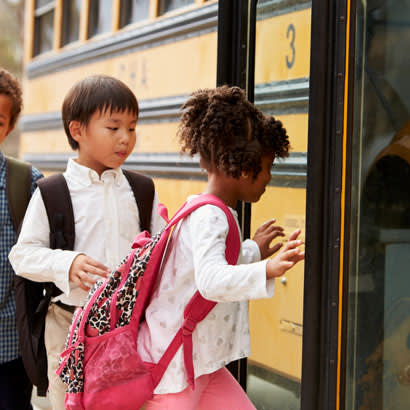
The Collaborative for Academic, Social, and Emotional Learning (CASEL), defines social and emotional learning (SEL) as an “integral part of education and human development.” SEL is “the process through which children and adults acquire and effectively apply the knowledge, attitudes, and skills necessary to understand and manage emotions, set and achieve positive goals, feel and show empathy for others, establish and maintain positive relationships, and make responsible decisions.”
CASEL has identified five core competencies (The CASEL 5) that are critical to social and emotional growth: self-awareness, self-management, social awareness, relationship skills, and responsible decision-making. These competencies influence academic success, civic engagement, health and wellness, future careers and future relationships.
Social and emotional learning — and the development of these five competencies — can take place almost anywhere. Schools, families and communities all contribute to building a safe, healthy and thriving environment where youth can learn, develop and grow. Park and recreation out-of-school time (OST) and youth development programs provide an opportunity within the broader community to support and advance social and emotional learning. These programs not only help to ensure that youth receive needed services including mentoring, healthy meals and snacks, cultural enrichment, outdoor and nature-based activities, youth sports and unstructured play. They also provide opportunities for youth to build trusting relationships with adults and peers, achieve personal goals, make responsible decisions, manage emotions and develop healthy identities.
While social and emotional learning often occurs organically within these programs, park and recreation professionals can also take steps to intentionally integrate SEL within their programs. Given the challenges impacting youth over the past several years, there is a need for park and recreation professionals to focus on developing SEL skills that improve confidence, attitudes, behaviors, and youth outcomes.
As we enter a new school year, park and recreation professionals can consider how their programs can more intentionally integrate SEL to advance positive youth outcomes across their community:
1. Collaborate with your school district and other community-based organizations to work towards shared goals and ensure alignment.
Partnerships between schools and community-based organizations, including parks and recreation, create a network of adults working toward shared goals, using shared language, and aligning on approach to support learning and positive youth outcomes. Students are more likely to build knowledge and skills when they experience similar instruction across multiple settings where learning occurs. Adopting and using the same language when discussing concepts helps ensure consistency and eliminates confusion, while also providing an open door to two-way communication to better serve and support youth and families.
2. Assess how you are already supporting SEL.
Your OST and youth development programs are likely already providing a range of benefits and positive effects on youth (improved relationships and social connections, problem-solving, decision-making, leadership, academic performance, etc.). Assess what impacts your programs already have on youth and share those stories. As you assess, determine if there are opportunities to identify and set goals and targets that are better aligned with advancing SEL competencies for youth. As stated above, align with school partners on key metrics and goals to ensure a collaborative approach.
3. Establish a commitment to SEL across all out-of-school time and youth development offerings.
Adopting SEL as a core principle and a target outcome of all youth programs will help ensure that SEL is prioritized, and resources are allocated to support staff training, professional development, planning, and dedicated program time. Have strong talking points developed that help reinforce and elevate the importance of SEL within the community setting.
4. Start small.
Adopting curricula might seem daunting and not feasible given competing responsibilities, capacity gaps and other challenges or immediate priorities. Instead, consider integrating smaller, shorter, easy-to-implement activities into existing routines and practices. CASEL recommends a set of “signature practices” that provide an opportunity to integrate SEL into welcoming/inclusion activities, brain breaks and transitions, and closure activities each day.
5. Dedicate time for staff to learn more about SEL.
As with any subject matter, learning more about SEL can help staff further the implementation of SEL and improve the quality of your OST and youth development programs. Bring school staff together with staff from your park and recreation programs and other community-based organizations to learn from one another and learn together. There are a number of organizations and free/low-cost resources available to support OST professionals:
- Harmony Social & Emotional Learning Resource Hub
- Afterschool Alliance’s Social and Emotional Learning Toolkit
- CASEL’s resources, webinars and events
How are your programs supporting the social and emotional growth of youth in your community? Let us know. Reach out to health@nrpa.org to share!
Allison Colman (she/her) is NRPA's director of health.


